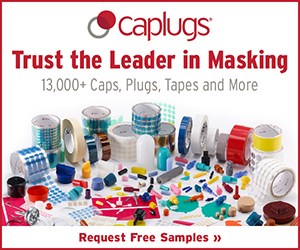Coating for Hostile Chemical Environments
Kevin Biller, director of ChemQuest Powder Coating Research, discusses approaches for powder coating for harsh chemical environments.
Q: We are in a business producing diesel generators with acoustic enclosures. We apply pure polyester powder coating on these enclosure parts. Recently, we have been asked to install our generator at a place that is surrounded by heavy chlorine gas throughout the life of all installations.
Can you suggest a suitable surface treatment and painting system for our enclosure parts to resist such an atmosphere, also advise of the life expectancy of such a coating system, and if required, the frequency of recoating on site to sustain the durability of the coating?
A: You are wise to consider using a more durable powder technology than polyester chemistry for this hostile chemical environment. First, let’s talk about metal pretreatment. The steel must be completely cleaned and devoid of any oxidation. The best cleaning technique would involve a high-quality alkaline cleaner followed by a water rinse. The next stage should be a high-quality iron phosphate conversion coating followed by two rinses, clean water, then a deionized water rinse. The final stage should be a seal, typically an organic-based material.
The parts should then be thoroughly air-dried in an oven and cooled before the powder coating is applied. Your choice of powder will depend upon whether it is in an indoor or outdoor environment. I would assume that this is an indoor application from your explanation.
For indoor environments, I recommend that you use a functional-grade, epoxy-based powder coating. These can be either phenolic-cured or amide-cured products. Either will work well. The powder coating should be applied to a thickness of at least 3.0 mils, but preferably 4.0 to 6.0 mils and thoroughly cured per the manufacturer’s recommendation. The color stability of epoxy powders is only marginal, so you can expect to see variations in color for lighter shades.
For exterior environments, you have two choices — one is using an epoxy-based primer followed by a polyurethane topcoat. Alternatively, you can consider using a single coat of polyurethane. The two-coat system will provide the best overall durability; however, you will need to take measures to ensure acceptable adhesion of the polyurethane to the epoxy. The best process is to slightly undercure the epoxy primer then apply the polyurethane and fully bake the two-coat system.
Both the epoxy and polyurethane can resist chlorine gas if formulated and applied properly. Recoating should not be necessary for a long time. I strongly recommend that you test any coating system thoroughly before committing to a commercial process. It would make sense to coat a number of test panels with the systems described above and expose them to the service environment targeted to determine if the products will withstand the possible chemical attack.
About the Author

Kevin Biller
Kevin Biller is director of ChemQuest Powder Coating Research. Visit chemquest.com.
Related Content
-
How to Choose the Right Coating for Fasteners
Choosing the proper coating for fasteners can help with performance by improving durability and lifespan. In this helpful Ask the Expert article, Mark Schario of Columbia Chemical offers advice for choosing the right fastener coatings.
-
Adjusting Current and Voltage When Powder Coating
Which manual powder coating gun setting is better to adjust, voltage or current? Jeff Hale of Gema USA discusses when to use different settings on your powder gun to achieve optimal results.
-
Coating Systems with the Best Long-Term Performance
The best protection against corrosion and UV exposure, says Axalta’s Mike Withers, is electrocoat and a super durable powder coating.















